With its dramatic vertical lines and easy cultivation, Gladiolus is ideal for adding a stunning touch to gardens, borders, containers, and floral arrangements.
Real eye-catchers in the garden, Gladioli, also known as sword lilies, are cormous perennials boasting spectacular spikes of funnel-shaped flowers in a surprisingly wide range of colors. Borne atop attractive fans of sword-shaped or linear leaves, they always provide a dramatic effect with their rich and cheerful colors and their breathtaking vertical lines. Easy to grow if some rules are followed, they deserve a spot in beds and borders, containers, or in floral arrangements.
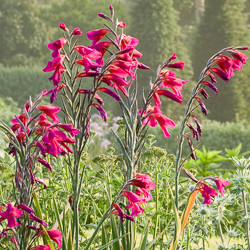 |
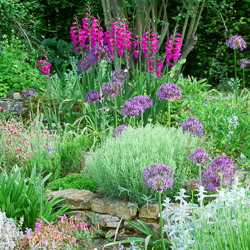 |
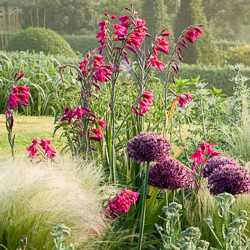 |
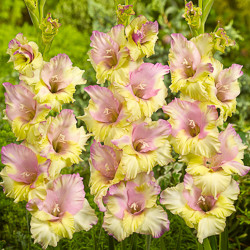
|
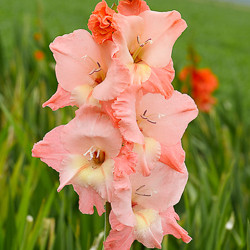
|
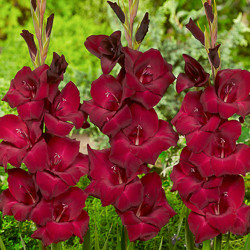
|
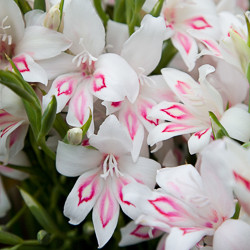
|
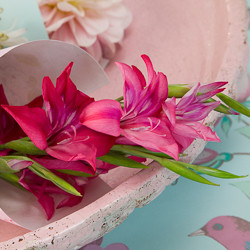
|
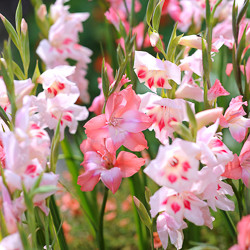
|
Some examples of summer-blooming African species are Gladiolus dalenii, G. cruentus, G. oppositiflorus, G. papilio, and G. saundersii.
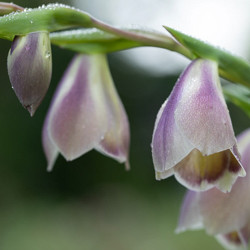
|
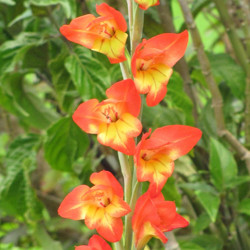
|
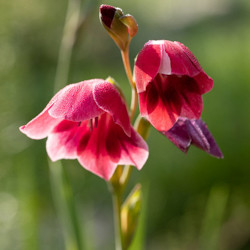
|
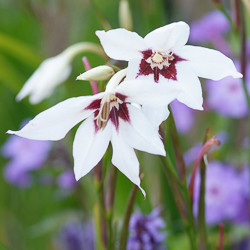 |
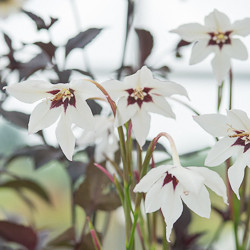 |
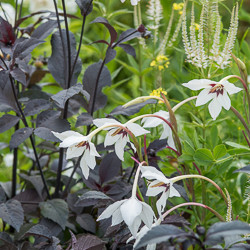 |
| Hardiness |
5 - 11 |
|---|---|
| Heat Zones |
1 - 9 |
| Climate Zones | 4, 5, 6, 7, 8, 9, 12, 13, 14, 15, 16, 17, 18, 19, 20, 21, 22, 23, 24, H1 |
| Plant Type | Bulbs, Perennials |
| Genus | Gladiolus |
| Exposure | Full Sun |
| Season of Interest |
Spring (Late) Summer (Early, Mid, Late) Fall Winter |
| Height |
2' - 6' (60cm - 180cm) |
| Spread |
1' - 2' (30cm - 60cm) |
| Maintenance | Average |
| Water Needs | Average |
| Soil Type | Chalk, Loam, Sand |
| Soil pH | Acid, Alkaline, Neutral |
| Soil Drainage | Moist but Well-Drained, Well-Drained |
| Characteristics | Cut Flowers, Showy |
| Tolerance | Deer, Rabbit |
| Attracts | Butterflies, Hummingbirds |
| Landscaping Ideas | Beds And Borders, Patio And Containers |
| Garden Styles | City and Courtyard, Informal and Cottage, Traditional Garden |
LiliGraphie, Shutterstock
| Hardiness |
5 - 11 |
|---|---|
| Heat Zones |
1 - 9 |
| Climate Zones | 4, 5, 6, 7, 8, 9, 12, 13, 14, 15, 16, 17, 18, 19, 20, 21, 22, 23, 24, H1 |
| Plant Type | Bulbs, Perennials |
| Genus | Gladiolus |
| Exposure | Full Sun |
| Season of Interest |
Spring (Late) Summer (Early, Mid, Late) Fall Winter |
| Height |
2' - 6' (60cm - 180cm) |
| Spread |
1' - 2' (30cm - 60cm) |
| Maintenance | Average |
| Water Needs | Average |
| Soil Type | Chalk, Loam, Sand |
| Soil pH | Acid, Alkaline, Neutral |
| Soil Drainage | Moist but Well-Drained, Well-Drained |
| Characteristics | Cut Flowers, Showy |
| Tolerance | Deer, Rabbit |
| Attracts | Butterflies, Hummingbirds |
| Landscaping Ideas | Beds And Borders, Patio And Containers |
| Garden Styles | City and Courtyard, Informal and Cottage, Traditional Garden |
Create a membership account to save your garden designs and to view them on any device.
Becoming a contributing member of Gardenia is easy and can be done in just a few minutes. If you provide us with your name, email address and the payment of a modest $25 annual membership fee, you will become a full member, enabling you to design and save up to 25 of your garden design ideas.
Join now and start creating your dream garden!
Create a membership account to save your garden designs and to view them on any device.
Becoming a contributing member of Gardenia is easy and can be done in just a few minutes. If you provide us with your name, email address and the payment of a modest $25 annual membership fee, you will become a full member, enabling you to design and save up to 25 of your garden design ideas.
Join now and start creating your dream garden!